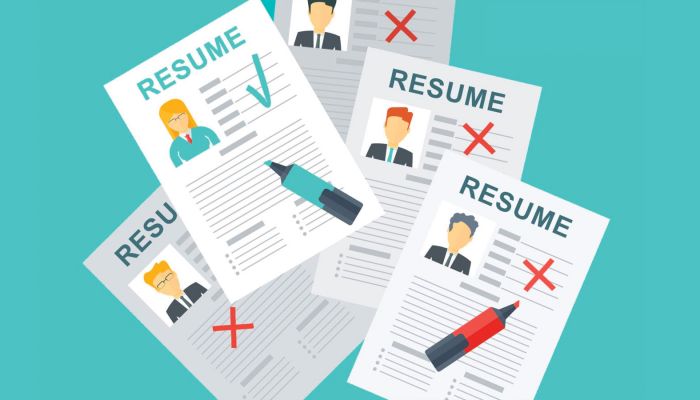Practical tips for writing a resume (curriculum vitae) in an individual, successful and impressive style! There is no magic formula for creating the perfect resume, but these writing tips will help you craft your own.
To help you write your resume, here are some clear tips for creating a resume with a personal, successful, and impressive style! There is no magic formula for creating the perfect resume, but these writing tips will help you on your way to the perfect application, and below you will find an example of a social media manager resume example.
There is no standard resume model, even if they are often similar in form. Feel free to have multiple resumes on hand depending on the type of position you’re applying for or the type of business sector you’re targeting.
General principles of autobiography
A resume is your life on one page, your first step into the professional world. It should describe in detail your experiences both in terms of your studies and in terms of your various experiences revealing your personality. With this, you should clearly state who you are and why you are a good fit for the position you are applying for. Thanks to your resume and its style, we can also appreciate your synthetic spirit and your personality.
Please note that your resume is in addition to your cover letter: the resume is factual and summarizes your experience, there is no need to talk too much about each experience or degree, the cover letter can take over and highlight some of the important aspects of your application.
The style of your resume should be: unique, free of spelling errors, clear and airy, sincere, true to life.
For a student, it should fit on one page, but if justified by the course, in exceptional cases it can be on two pages (after several years of experience).
Training and work experience
Undeniable references, training or experience inform the recruiter about your skill development environment. A recruiter first of all looks at a candidate’s skills, diplomas or experience provide the basis for them.
These two headings are in chronological order. The latest experiments or research should appear first. The recruiter immediately knows your last jobs, or diplomas, and this is what interests him the most.
To write them, you must first inventory your diplomas and additional training, as well as your professional experience. Then, you’ll sort through experiences unrelated to your future job that weigh down your resume or obscure your career plan. The recruiter would like to be able to determine, depending on your experience, what type of career you are leading.
Indicate the name of the company, the title of the position held, the duration of the experience, the missions completed and, if possible, the results obtained for each of the missions!
People most often have diverse profiles or dual career paths. This is not a lack of consistency, but, on the contrary, a certain spirit of initiative and adaptation, qualities that are highly valued in our world, where landmarks change so often.
Hi, I am Adam Smith, Admin Of TechSketcher, Creative blogger and Digital Marketer.
